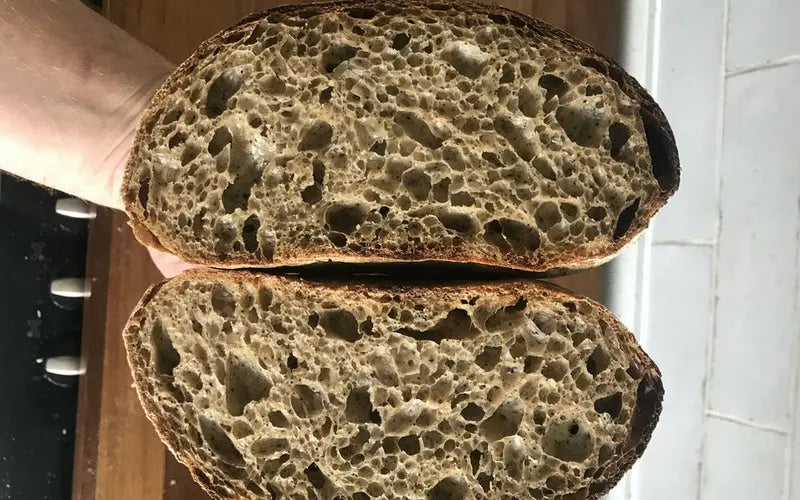The UN declared 18th June as World Sustainable Gastronomy Day, and in honour of this we are bringing you our friend and Michelin-star chef Mark Donald’s Difference Coffee Sourdough Bread recipe. The recipe uses the spent grounds from two Difference Coffee capsules as well as one brewed shot of coffee (drink the other, of course!) and is fitting with the “waste not” theme.
This recipe calls for a ripe sourdough starter, which takes at least a week or two to prepare if you don’t already have one. If this is going to be your first sourdough bread recipe, we suggest doing a little reading up on the process. It’s not complicated, just somewhat time-consuming.
As a reward for the time invested in the starter and slow-rising dough, you eventually get to feast on a freshly baked loaf of Difference Coffee Sourdough Bread. You can slather it with salted butter, go sweet with jam, make a simple cheese sandwich or just eat a crusty slice as-is.
INGREDIENTS
500g strong white flour
350g warm/tepid water
Granules from 2 used Difference Coffee pods
200g active sourdough starter or levain
14g salt
1 x 50ml shot difference coffee (optional)
METHOD
Make two coffees, one for yourself, one for the bread.
Weigh 14g salt into a coffee cup and pour 1 difference espresso into the salted cup Stir to dissolve and let cool.
Drink the other one and then pop the used coffee granules from both pods into a large mixing bowl.
Weigh the flour, water and starter into the large bowl with the coffee granules. Mix all together into a paste.
Cover this mix with a shower cap or a damp cloth for about 45 minutes.
Add the salty coffee to the bowl and work the solution into the dough.
(This dough is quite wet and will be less so if you omit the espresso or some water if you are more comfortable working with a drier dough).
Work the dough in a food mixer with the dough hook attached for 5 minutes (speed one), then 3 minutes speed two until the dough has some strength and the gluten has been given some structure.
Alternatively, and since you have bugger all else to do, you can dump the dough on a work surface and knead it to achieve the same result. The “slap and fold” method (look it up) for this, championed by Richard Bertinet, is an effective way of getting it done.
The dough should be less wet, stretch without breaking when pulled and have some elasticity.
When you are happy with the dough, transfer it to a large bowl that it can prove in.
Let it sit for at least 5 hours at room temp stretching and folding (google it) every 40 minutes or so.
After the time has passed, dump the dough onto your work surface. Either divide the dough in two or keep one big ball. Shape the dough with a scraper and your hand(slightly wet helps) pushing the scraper underneath the dough and dragging the dough along the bench to create surface tension.
Do this four or five times. Rest the dough on the bench for at least 15 minutes. Using a little flour this time, shape again as before and then place smooth side down in a floured banneton.
Cover again with a shower cap or a damp cloth (cling film if you don’t have anything else but the world is fucked enough as it is, right?).
Prove for 3-4 hours in the basket or in the fridge overnight.
By now your dough should have almost doubled in size. If not give it a little longer. Preheat your oven to 240 celsius with a large cast iron pot inside for at least 40 minutes. When you are happy with the dough, invert the basket onto a floured tray or ideally baking parchment.
Score down the middle with a sharp blade or serrated knife if you have nothing razor sharp. Remove the cast iron pot from the oven and carefully lift the baking parchment with the dough and place inside the hot pot.
Put the lid on the pot and put in the oven for around 25-30 minutes depending on your appliance. Take the lid off and bake for another 20-30 minutes depending on how well fired you want your crust. Let the bread cool then smash it with butter.







